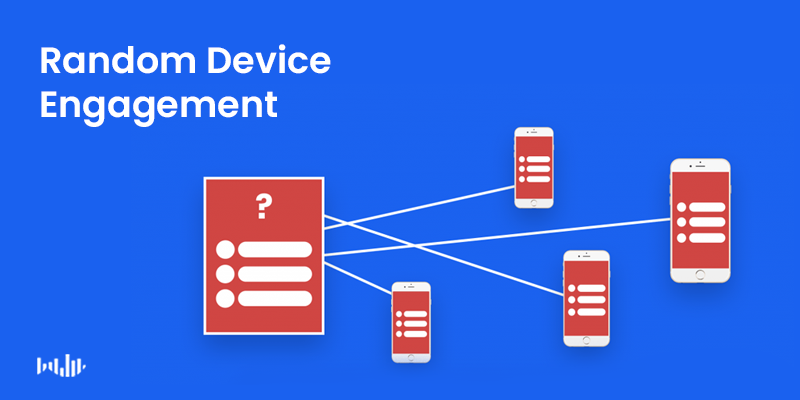Marketing & Market Research: How Customer Insights Inform Digital Marketing

We live in a time of increasingly rapid market shifts, so it’s important to continuously test channels, tactics, and audiences and reflect on the strategies you employ. With marketing market research as an ongoing activity, you can understand changing consumer preferences and market dynamics, and adapt your campaigns before your competitors do.
When collected and interpreted effectively, the intelligence you gain from marketing market research will boost the effectiveness of any marketing campaign, and generate stronger engagement with your target audience.
It provides a deeper understanding of how your value proposition is perceived and helps you deliver compelling messaging to your customers on the platforms they frequent the most and in a format they will enjoy consuming.
Categories of Marketing Market Research
Broadly speaking, there are five different categories of market research that are relevant to digital marketing:
- Brand research: Gathering insights that help with developing and managing a company’s brand identity. This could take many forms, from understanding which charities your audience supports to planning corporate partnerships, todesigning imagery, using cultural references, language, and color palettes.
- Customer research: Providing insights into the demographics, attitudes, and behaviors of customers (or prospective customers) and identifying niches to take advantage of for your messaging, targeting, or campaign deployment.
- Campaign efficiency: Measuring the effects of your message’s efficiency (whether it’s getting through, and that your target market is responding to your campaign favorably).
- Competitor research: Evaluating the strengths and weaknesses of your competitors, and/or asking consumers about their own perception of other brands in your niche.
- Product development: Crowdsourcing knowledge and opinions to inform the design of a product or service. This involves digging into the experience of using something, also widely known as UX (user experience)which can uncover previously unknown customer pain points and motivations.
Marketing departments are interested in usability testing, so they can see how customers interact with product features in real time. This can reveal hidden bugs and unseen obstacles.
However, the five categories mentioned above are the ones that yield data that will inform your digital marketing strategy, because they give you insight into your audience’s values, behavior, experiences, and perspectives.
Researching Channels & Content Formats for Marketing

Successful marketing campaigns convey a compelling message in the right place, at the right time, to the right people. And to have an impact, you need a media strategy that makes sense in the channels and platforms on offer. With this in mind, your early research can focus on:
- Marketing channels: Part of understanding your audience persona is to know about which channels you can reach them on, and what state of mind they’re in while using them. If your campaign goal is immediate sales, you need to find out where your audience is in a need state – i.e. where they’re ready to buy.
For example, your audience might be socially active on Instagram, but not ready or willing to buy. This could lend itself to a brand-led awareness campaign. But for direct sales or lead generation goals, the right channel might actually be Google Search. - Content formats: Naturally, each channel requires distinct formats and structures for content. For example, if surveys indicate that your audience browses YouTube to educate themselves about DIY, this could be a perfect channel for how-to video content or direct response advertising campaigns promoting your new drill range.
While market research can’t help you analyze the success or failure of your tests on different digital channels, asking the right questions sets you up with educated hypotheses. This is superior to relying on your gut instinct alone, and means that you’ll get started on the right foot.
Survey Strategies: How to Get Insights for Your Marketing
Survey strategies have adapted with technology, and many businesses have moved away from traditional approaches towards online methods. Here are three of the most popular online survey approaches around right now:
- Online panels: Online panels collect responses from opted-in panelists who are recruited to participate in specific surveys. With online panels, you can also track trends in responses over time from the same people. However, they have downsides, including panel fatigue, conditioning, and declining participation over time.
- Assisted crowdsourcing: This method invites respondents to participate in a survey through social media. It can have huge penetration, yielding a lot of data. But biases can be introduced by quota sampling, which can lead to serious polling errors.
- Random Device Engagement (RDE): RDE organically engages respondents (a.k.a.. organic sampling), who are randomly picked from the target audience through the devices, software, or apps that they’re already using. Participants respond to a survey in exchange for an incentive within the delivery platform. Pollfish uses this methodology.

RDE is the immediate successor to Random Digit Dialling (RDD), improving massively on this method by targeting the user’s unique ID – which can be tracked across multiple devices and platforms. This also helps prevent fraud, and the quantity of paradata available when using RDE allows for considerable bias correction within the results.
By merging machine learning technology with organic sampling methodologies like RDE, at Pollfish we can increase the value of your data by extracting authentic responses from an engaged and representative audience. Combined with massive coverage and programmatic delivery across over 140,000 partner apps, this yields instantaneous and reflexive responses.
These responses are taken randomly from a target sample, who can participate in the surveys without unduly disrupting their normal engagement with their device. This means that your research is conducted in a natural atmosphere, rather than in an unfamiliar environment.
Gaining Insights Quickly for Your Digital Marketing
Market research surveys can help you set up your marketing campaigns with a better chance of targeting the right audiences with the right messages in the right channels. However, not all survey strategies are created equal, and not all will get quality data in a reasonable timeframe.
Programmatic delivery using organic sampling and RDE allows you to get hold of insights quickly, without sacrificing the data quality. This fast-moving intelligence is particularly useful for marketers who are testing different digital channels and messages to work out the best strategies for generating leads, sales, or brand awareness.
Do you want to distribute your survey? Pollfish offers you access to millions of targeted consumers to get survey responses from $0.95 per complete. Launch your survey today.
Frequently asked questions
What are the five categories of market research?
Market research can be broken into five main categories: brand research, customer research, campaign efficiency, competitor research, and product development.
What is a marketing channel?
The term marketing channel refers to the area in which a company can reach prospective customers in order to sell their product or service.
What are some examples of marketing channels?
Marketing channels include social media, online advertising, salespeople, catalogs, and in-person experiences.
How can market research help improve a marketing campaign?
Market research provides a better understanding of the target market so a company can create a message that will be compelling to those customers, thereby achieving greater ROI on that campaign. It also helps them understand the platform and format that will be most effective in reaching this audience.
What is assisted crowdsourcing?
Assisted crowdsourcing is a survey method that uses social media to source the survey respondents. It is typically able to gather responses from large numbers of people, resulting in a great amount of usable data.
Do you want to distribute your survey? Pollfish offers you access to millions of targeted consumers to get survey responses from $0.95 per complete. Launch your survey today.
